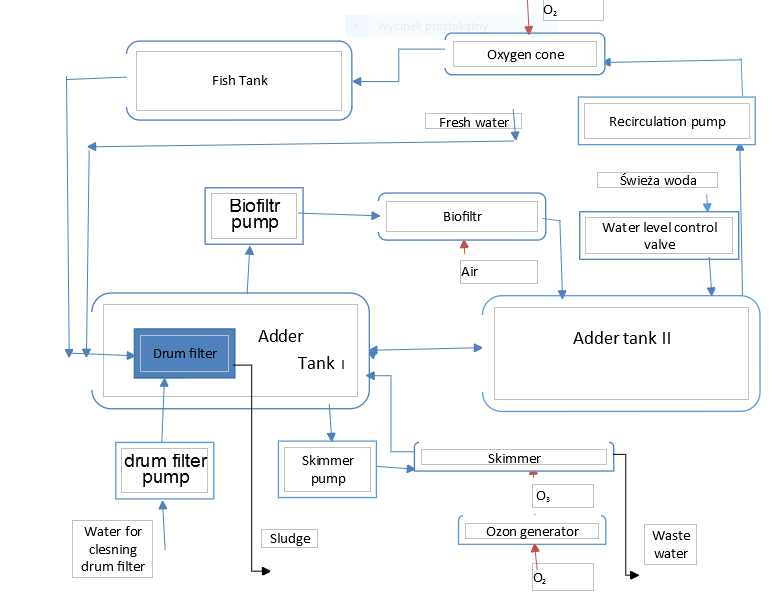What is recirculating aquaculture systems (RAS)?
Recirculating aquaculture systems – or shortly – RAS is the system that frees the fish farming from necessity of using the big water reservoirs due to using system of pools, pumps and bio-filtration. In the process we also use the UV-C lamps to be sure that the production is safe and clear. In that kind of system we can improve the fish grow rate and get much better results of final production per year. The bellow example

Pros of recirculating aquaculture systems (RAS)
- The production is independent from environmental conditions – there’s much safer for production due to protection against pathogens. The water is mainly provided from groundwater.
- Better fish grow – in example the sturgeon grow rate oscillate between 1.4 / 2.5 kg per individual sturgeon / year
- Possibility to obtain up to 70 kg / m2 of water surface
- In specific conditions and kind of fish that system provides some unusual benefits – i.e – we can take caviar from sturgeon multiple time a year!
- Reduction of losses of expensive fish culture (cultivation in RAS only make economic sense in the case of the species desired in the market and high price) that can not be avoided under traditional culture.
Why we should use recirculating aquaculture systems (RAS) in fish farming?
- Providing oxygenated water to fish at the optimum temperature.
- The constant circulation of water through a biological filter and UV-C anaerobically, without oxen-free zones.
- Smooth movement of fish in swimming pools regardless of their development level.
- Regular removal of deposits and other waste at the appropriate points of circulation.
- Ensuring water transparency “up to the bottom”.
Sturgeon farming with recirculating aquaculture systems
Breeding in the direction of caviar is the most profitable use of the direction of the fish. The only downside of this solution is the long (about 5-10 years) period of reaching the full production capacity which is related to such a period of reaching sexual maturity.
Breeding sturgeon for meat is an alternative. The sturgeon is characterized by a fast growth rate in some individuals even up to 1.4 kg per year – in the case of caviar farming.
Recently, genetically modified Atlantic salmon appeared on the American market, which breed has recently been legalized in the USA and Canada. I think it is a matter of time to open the market in Europe for this species. It is characterized by very fast growth (biennials reach about 4 – 5 kg of weight) and a curiosity, is a freshwater fish. Adults are infertile, which does not pose a threat to Salmo salar in the event of escape from the farm.
Project specification – Project of a caviar manufacture and sturgeon hatchery plant with a capacity of 2,300 kg of caviar production per year